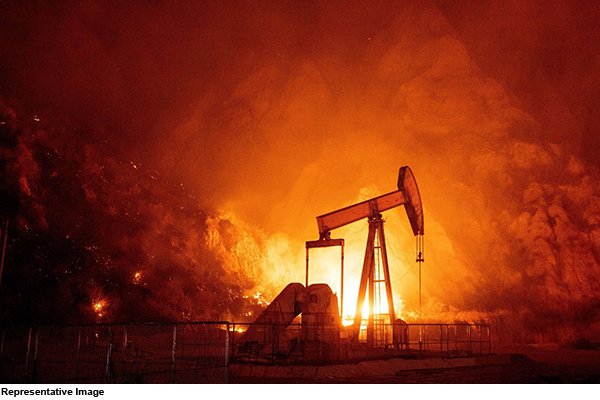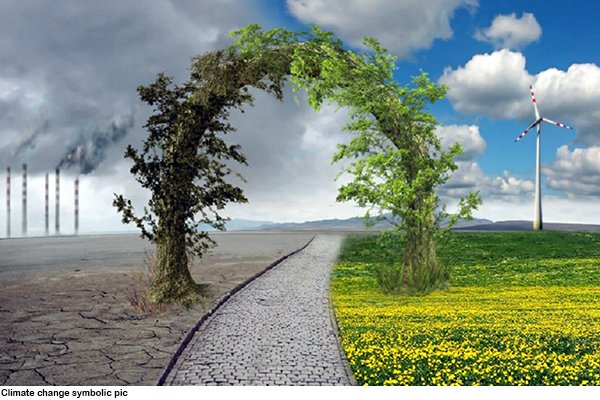The United Nations Environment Program (UNEP), with the support of the European Union, launched a new observatory as part of an action to reduce methane emissions. Methane is a potent greenhouse gas that is currently responsible for at least a quarter of climate warming.

The International Methane Emission Observatory (IMEO) was launched on the eve of the latest round of climate talks at the G20 summit, known as COP26, in Glasgow.
IMEO will improve the accuracy of reporting of human-caused methane emissions and improve public transparency. The observatory will initially focus on methane emissions in the area of fossil fuels, and then expand to other major emitting sectors such as agriculture and waste.
The recently published UNEP-CCAC Global Methane Assessment states that zero or low net cost reductions could nearly halve anthropogenic methane emissions and that by proven measures, the projected increase in Earth’s average temperature by 2050 could be 0.28 °C. shortage can be avoided.
IMEO, the Global Methane Pledge – an effort by more than two dozen countries led by the US and the European Union to reduce methane emissions by 30 percent by 2030, seeks to prioritize and monitor actions taken by state organizations. will provide the means for
Methane is 80 times more powerful than carbon dioxide
To stay on track to reach the Paris Agreement goal of limiting climate change to 1.5°C, the world needs to cut greenhouse gas emissions by nearly half by 2030. The Intergovernmental Panel on Climate Change states that if the world is to achieve the 1.5 °C temperature target, it will have to reduce more methane emissions.
UNEP Executive Director Inger Andersen said, “As highlighted by the IPCC, if the world is serious about avoiding the worst effects of climate change, we need to cut methane emissions from the fossil fuel industry. But it’s not the get-out-of-jail card: the Paris Agreement states that limiting warming to 1.5°C would require actions to carbonize the energy system as well as cut methane.”
Over a period of twenty years, it has been found that methane released directly into the atmosphere is 80 times more powerful than CO2. Methane has a relatively short atmospheric lifetime of 10 to 12 years – action to cut methane emissions will most immediately reduce the rate of warming, while also improving air quality.
EU Energy Commissioner Kadri Simsson said: “Methane has accounted for about 30 percent of global warming since pre-industrial times, and today it has more emissions than at any other time since record-keeping began in the 1980s.” growing rapidly. Existing systems do not allow us to determine where and in what amounts emissions occur globally. Once better data are available, countries can take rapid and well-targeted action In the EU, we will already propose legislation leading this year to cut methane emissions. This includes mandatory leak detection and repair and limiting venting and flaring.”
The fossil fuel industry accounts for a third of anthropogenic emissions and is the sector with the highest potential for reduction. Wasted methane, the main component of natural gas, is a valuable source of energy that can be used to fuel power plants or homes.
IMEO: An independent and reliable organization
The observatory will create a global public dataset of empirically verified methane emissions, at increasing levels of granularity and accuracy, by integrating the data, starting with the fossil fuel region. Mainly from four streams: reporting from the Oil and Gas Methane Partnership 2.0 (OGMP 2.0), direct measurement data from scientific studies, remote sensing data and national inventories. This will allow IMEO to use this data to target strategic mitigation actions to companies and governments around the world and to support science-based policy choices.
Data collected through OGMP 2.0, launched in November 2020 in the framework of the Climate and Clean Air Coalition, are critical to this effort. OGMP 2.0 is the only comprehensive, measurement-based reporting framework for the oil and gas sector, and its 74 member companies represent many of the world’s largest operators across the entire value chain, with assets accounting for more than 30 percent of all oil and gas production.
IMEO: First Annual Report
In releasing the report coinciding with the launch, IMEO placed its Theory of Change, at the center of which is the need for an independent and reliable entity that integrates these multiple sources of heterogeneous data into a coherent and policy-relevant dataset. Can you The report also includes an analysis of the first reports submitted by company members of OGMP 2.0. During this first year, most companies put significant effort into reporting and outlined reduction targets by 2025.
Of the 55 companies that set the target, 30 have met the recommended targets of a 45% reduction or near-zero methane intensity and 51 have submitted plans that provide confidence that the accuracy of their data will improve over the next 3-5 years. Will improve over the years. IMEO, which is operated by UNEP, has a budget of 100 million euros over five years. To maintain its independence and credibility, it will not receive any industry funding. Instead, IMEO will be funded entirely by governments and philanthropists, with core resources provided by the European Commission as a founding member.

